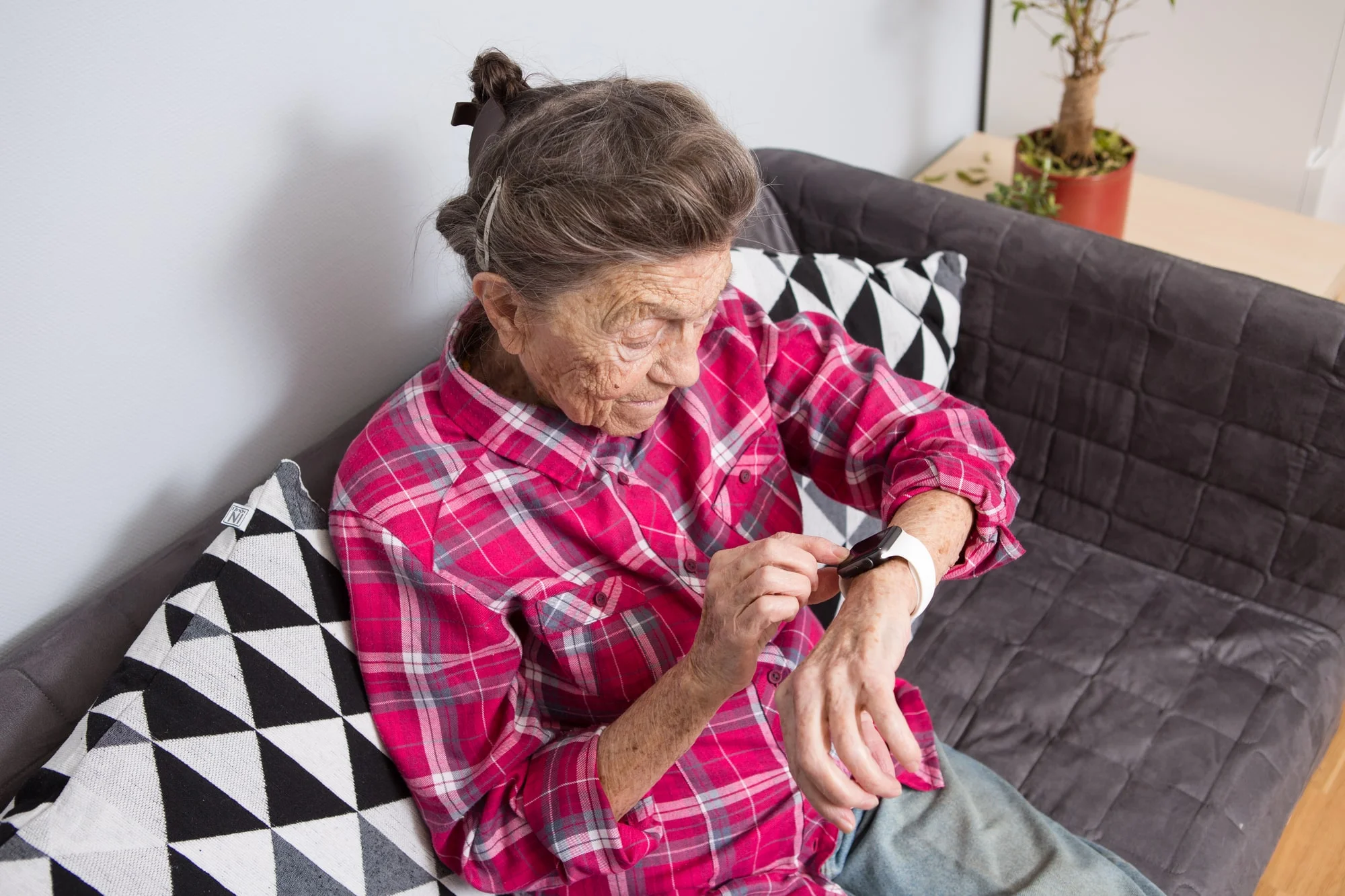Seventy percent of U.S. seniors are now online. Internet-connected devices are a part of their daily lives and they use them to stay informed, connect with family and friends, make travel plans, and more.
Research shows that aging, health issues, and technology will be completely linked in the future. The myths surrounding older adults’ limited adoption and use of technology are being challenged as we speak. One thing is abundantly clear: seniors like technology and are increasingly incorporating digital and voice-activated tech into their lives.

Here are five ways senior living communities can help improve the quality of life for their residents through the use of technology.
1) Wearables
Apple watches, Fitbits, and other Wi-Fi enabled wearables fall under the broader category of the Internet of Things (IoT). Some continuing care retirement communities are using wearables in place of or to complement nurse call systems to signal an emergency. These health-tracking devices make it easy for staff to reliably monitor conditions like blood pressure, heart rate, sleep patterns, and more.
2) IoT Devices
Tablets, TVs, and healthcare smart devices are some of the fastest growing sectors of IoT for seniors. Many of these conveniences serve dual purposes:
- Smart water bottles monitor how much water a person drinks each day and sends that data to a health-tracking app.
- Smart thermostats let residents use their phone or tablet to adjust the temperature of the room without having to get up, preventing falls in the middle of the night.
- Voice-command lights also help prevent falls by increasing visibility.
Seniors also use IoT devices to monitor smoke alarms and carbon monoxide detectors and track air quality changes.
3) Making Everyday Tasks Easier
Bathroom aids, medication management, and smart kitchen gadget are just a few of the digital devices that make everyday tasks easier for seniors.
- Wayfinding software guides residents and visitors indoors and out.
- Hospital-grade fitness equipment keeps residents limber while also diagnosing medical condition, preventing health problems, and tracking physical therapy success.
- Kindles, Nooks, and other eReading devices offer a huge supply of educational and entertaining books, magazines, and newspapers.
- AI-enabled personal assistants like Google Home, Amazon’s Alexa, and Microsoft’s Cortana do everything from reminding residents when to take their medications to filling them in on the day’s weather or latest sports news.
Other handy digital helpers include mobile keyless entry, interactive touchscreens for videoconferencing, and streaming services for watching TV and movies or listening to music.
4) Cameras
It isn’t a happy topic, but elder abuse is a real issue for many seniors. It’s estimated that one in 10 adults over the age of 60 faces neglect and/or physical, emotional, sexual, or some other form of abuse. Cameras help families or caretakers make sure seniors are being treated properly. They’re also great for helping healthcare providers track a resident’s movements.
5) Phone Apps
One of the biggest advancements in technology are phone apps that collect important information that can be transmitted to doctors, nurses, or community staff. Simpler apps keep seniors occupied and engaged with fun games, brain teasers, and social media accounts.
Connected devices designed to increase resident happiness and personal satisfaction require a strong Wi-Fi solution that’s reliable 24 hours a day. Medical Grade Wi-Fi® offers 99 percent reliability and is HIPAA compliant. To learn more, contact HealthSignals today.
